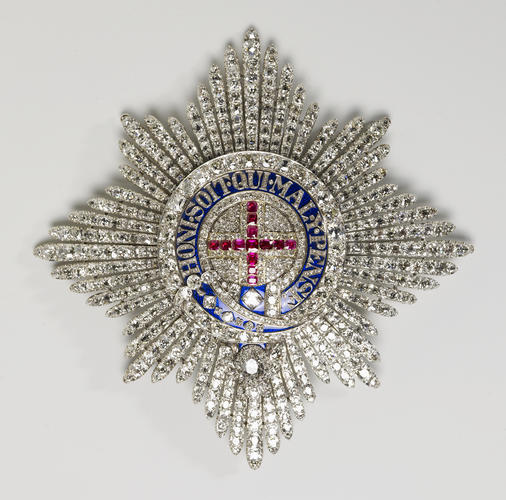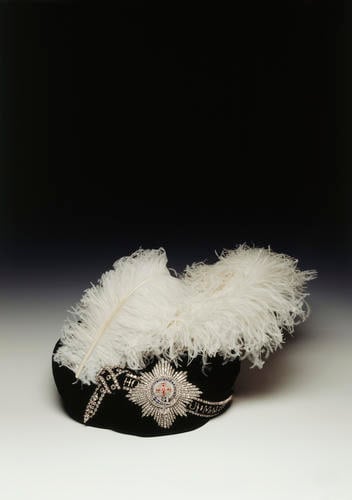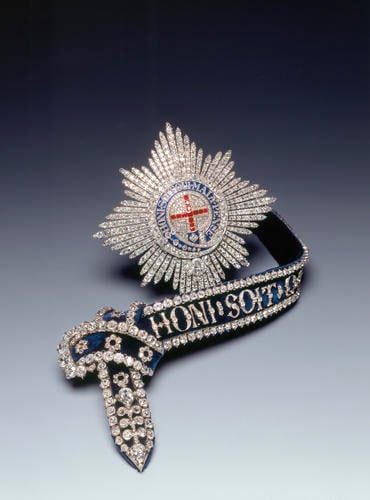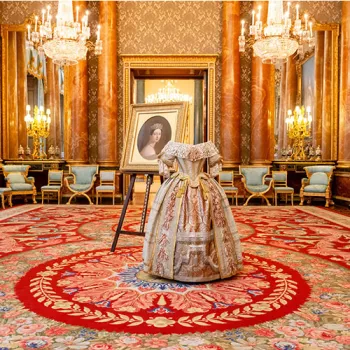Garter star second half 18th century
Diamonds, rubies, enamel, silver, gold | 13.0 x 13.0 cm (whole object) | RCIN 441147

England
Order of the Garter (England). George III's star second half 18th century

England
Order of the Garter (GB). Prince Albert's Garter second half 18th century

England
Order of the Garter (England). George III's star second half 18th century

England
Order of the Garter (GB). Prince Albert's Garter second half 18th century




-
George III was appointed to the Order of the Garter, the premier English order of chivalry, by his grandfather George II on 22 June 1749, at the age of 11. On his accession in 1760, he became Sovereign of the Order - along with the other British orders, the Thistle and the Bath (which was restructured in 1815). Later in the reign three new orders were instituted: the Orders of St Patrick (founded in 1783), of the Guelphs (founded in 1815) and of St Michael and St George (the Ionian Order, founded in 1818).
However, the King’s devotion to the Order of the Garter was paramount. In 1786 he appointed five of his sons to the Order; the eldest two sons were already members (since 1765 and 1771 respectively). These appointments preceded the King’s ‘Great Works’ at St George’s Chapel, Windsor Castle - the seat of the Order - in the 1780s and 1790s.
The King accepted no foreign orders and apart from Garter insignia appears to have owned only a diamond St Patrick badge and a diamond badge of the Bath. According to inventories of 1788 and 1819, the King’s Garter insignia consisted of the diamond garter (worn around the left leg, below the knee), a diamond Garter badge ‘belonging to the Collar’, two other Georges (worn from a blue sash) and a single diamond star, kept in a green case. The star was described as ‘A very large Brilliant Star’ in the inventory of the King’s jewellery found at the Queen’s House in 1819.
In 1844, John Bridge of Rundell and Bridge recorded that the star, which consisted of 838 brilliants and was valued at £2,500, ‘may have been made in Queen Anne’s time’. It was described as ‘a star which Queen Anne had provided for Prince George of Denmark, but which had never been worn by him’. The Lady Anne (as she then was) had married Prince George of Denmark on 28 July 1683. It was a happy match, as well as an arranged one, intended to develop an Anglo-Danish alliance to contain Dutch maritime power. George was given many honours,in order to uphold his position and strengthen ties between his own and his adopted country, including the Order of the Garter, which he received in 1684. On Charles II’s death he acted as chief mourner at his funeral, and was soon afterwards appointed to the Privy Council by James II.
In 1858 the centre was remade with 18 brilliants, the Garter motto was reset in roses, the original 2-carat brilliant drop was replaced with a 1-carat stone and 398 brilliants were replaced. Possibly at the same time the rays, which were originally flexible, were reinforced with gold and fixed in place. It appears that Queen Victoria may have worn this garter star on her Garter mantle.
Catalogue entry adapted from George III & Queen Charlotte: Patronage, Collecting and Court Taste, London, 2004Provenance
Possibly made for Queen Anne as a gift for her husband, Prince George of Denmark; belonged to George III; altered for Queen Victoria, 1858
-
Creator(s)
(nationality) -
Medium and techniques
Diamonds, rubies, enamel, silver, gold
Measurements
13.0 x 13.0 cm (whole object)
Other number(s)
Alternative title(s)
Order of the Garter (England). George III's star








